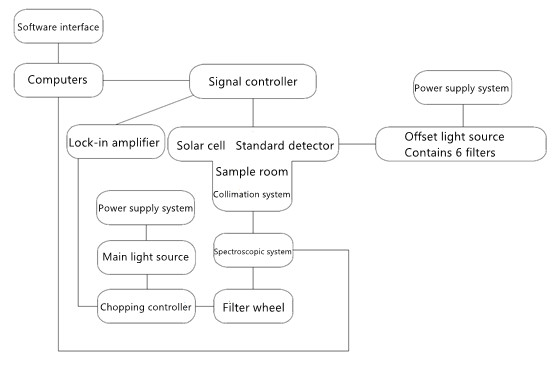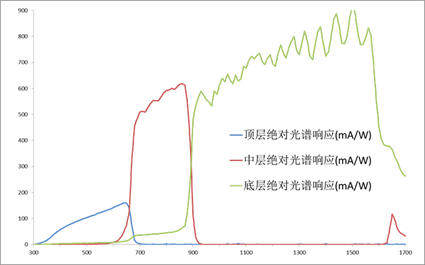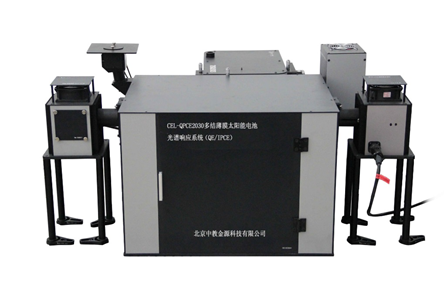Service hotline
+86 18518316054
 Current location : Home page > Products > Solar cell IV,QE/IPCE > CEL-QPCE2030 Multi-junction Thin Film Solar Cell Spectral Response System (QE/IPCE)
Current location : Home page > Products > Solar cell IV,QE/IPCE > CEL-QPCE2030 Multi-junction Thin Film Solar Cell Spectral Response System (QE/IPCE)

Model: CEL-QPCE2030
Place of Origin:Beijing
The spectral response and quantum efficiency of solar cells are important references for analyzing the process of solar cells and studying the performance of the cells. Efficiency) separately and calculate the absolute spectral response and quantum efficiency of the whole cell. The current densities of the top cell and bottom cell, as well as the total cell current density (under AM1.5G) can also be calculated separately.
System advantages
1) High-power continuous light source, with a flat output spectrum without spikes, ensuring measurement repeatability.
2)Equipped with bias light source and bias filter.
3)patented spectroscopic system to ensure good wavelength accuracy and repeatability, eliminating the influence of multi-level spectrum and small stray light.
4) correlation detection method to deal with weak signals, effectively improve the signal-to-noise ratio and ensure the measurement accuracy.
5)Unique sample fixture design, suitable for various specifications of thin film cells, convenient clamping, good electrode contact, and low interference to weak signal testing.
6) Complete fully automated dedicated system software.

Optical biasing technique
For multi-junction cells, when measuring one of the cells, it is necessary to bias the light to the other cells to make them fully conductive. Generally speaking, the wavelength of the bias light should be selected according to the range of the cell's spectral response, in which wavelength the cell responds, the light of which wavelength is selected to conduct the cell, so that the current generated by the measured cell can be output smoothly. The standard configuration contains only one bias light source, users can choose two bias light sources according to their needs, each bias light source can work independently, for more than three junctions of solar cells can be measured by separate bias method, solving the problem that it is difficult to match the filters of certain bands, which is a relatively unique design in the current market of solar energy test systems.
Main technical specifications
Indicators | Parameters |
Applicable batteries | Single-junction, double-junction, triple-junction, multi-junction thin-film solar cells |
Control mode | Software control, fully automatic scanning, automatic error elimination, automatic background deduction |
Spectral range | 200-1700nm |
Scan interval | ≥1nm continuously adjustable |
Spectral scan | Fully automatic, continuous |
Repeatability of test results | <0.3% (short-circuit current) |
Operating mode | DC mode DC, AC mode AC |
Chopper frequency | 5-1000Hz |
Temperature control table. | Temperature control range 5-40℃ (±0.5℃), optional |
Bias light source | Optional 2-way, xenon / halogen lamp |
Monochromator | Focal length 300mm, 150mm optional |
Bias voltage | ±3V, setting accuracy: ±1mV |
Bias filter | Short wavelength 3 pieces (imported), long wavelength 4 pieces |

